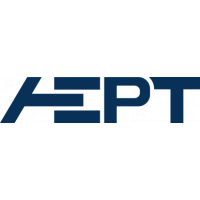The plasma-mediated decomposition of volatile organic compounds has previously been investigated in the gas phase with metal oxides as heterogeneous catalysts. While the reactive species in plasma itself are well investigated, very little is known about the influence of metal catalysts in solution. Here, we present initial investigations on the time-dependent plasma-supported oxidation of benzyl alcohol, benzaldehyde and phenol in the presence of molecular iron complexes in solution. Products were identified by HPLC, ESI-MS, FT-IR, and 1H NMR spectroscopy. Compared to metal-free oxidation of the substrates, which is caused by reactive oxygen species and leads to a mixture of products, the metal-mediated reactions lead to one product cleanly, and faster than in the metal-free reactions. Most noteworthy, even catalytic amounts of metal complexes induce these clean transformations. The findings described here bear important implications for plasma-supported industrial waste transformations, as well as for plasma-mediated applications in biomedicine, given the fact that iron is the most abundant redox-active metal in the human body.
| Field | Value |
|---|---|
| Publisher | |
| Authors | |
| Release Date | 2021-02-04 |
| Identifier | 70b637d2-a3dc-477a-bc9c-318866c3ac58 |
| Permanent Identifier (URI) | |
| Is supplementing | |
| Plasma Source Name | |
| Plasma Source Application | |
| Plasma Source Specification | |
| Plasma Source Properties | For the experiments in this study the repetition frequency was set to 1000 Hz and the amplitude of the HV pulse to 24kVpp. |
| Language | English (United Kingdom) |
| Plasma Source Procedure | Briefly, the experiments in this study were carried out with a dielectric barrier discharge, which consists of a copper electrode covered with aluminium oxide (Al2O3) with a thickness of 1 mm. The electrode has a diameter of 10 mm and the distance between the driven electrode and the sample was kept constant at 1 mm. |
| License | |
| Plasma Medium Name | |
| Plasma Medium Properties | The samples were placed on a grounded aluminium plate and ambient air was used as the process gas. |
| Plasma Medium Procedure | The temperature in the lab was adjusted to 20 °C and the relative humidity varied between 40 and 50 % during the period in which the experiments were carried out. |
| Plasma Target Name | |
| Contact Name | F. Kogelheide |
| Plasma Target Properties | 10μl of the sample were placed on cleaned silicon wafers (Siltronic AG) and treated with the DBD for 1, 3, 5 and 20 min. After treatment, samples were filled into reagent tubes and evaporated liquid replenished with distilled water to the concentration of 1 mg/mL for the analysis via mass spectrometry and HPLC. The samples for the FTIR spectroscopy were dried by desiccation after the plasma treatment. As controls, another sample was prepared equally, omitting the plasma treatment. Control samples were placed in ambient conditions as the sample treated for the longest time. |
| Plasma Target Procedure | Silicon wafers were treated for 5 seconds before the sample was placed on them. |
| Contact Email | |
| Plasma Diagnostic Properties | Vertex FTIR-micro spectrometer (Bruker)
Esquire 6000 mass spectrometer (Bruker) |
| Public Access Level | Public |
| Plasma Diagnostic Name | |
| Funding Agency | |
| Project |


![[Open Data]](https://assets.okfn.org/images/ok_buttons/od_80x15_blue.png)